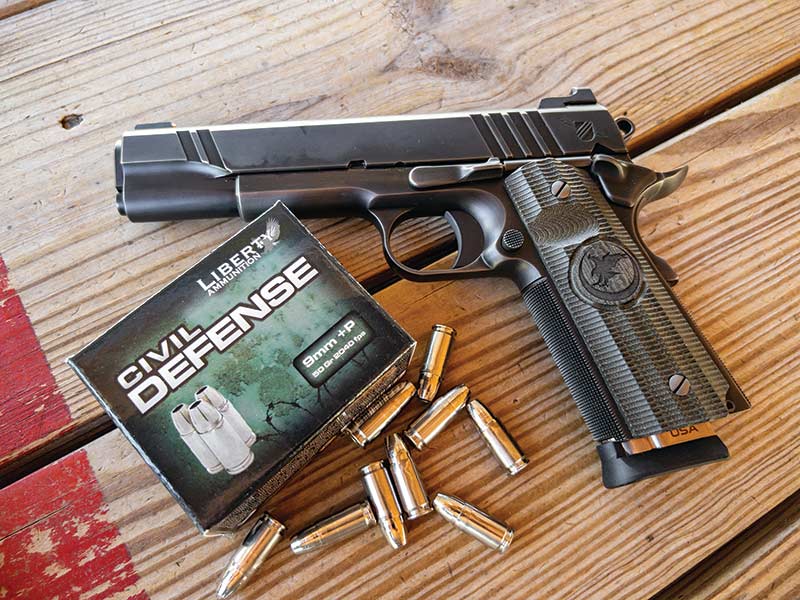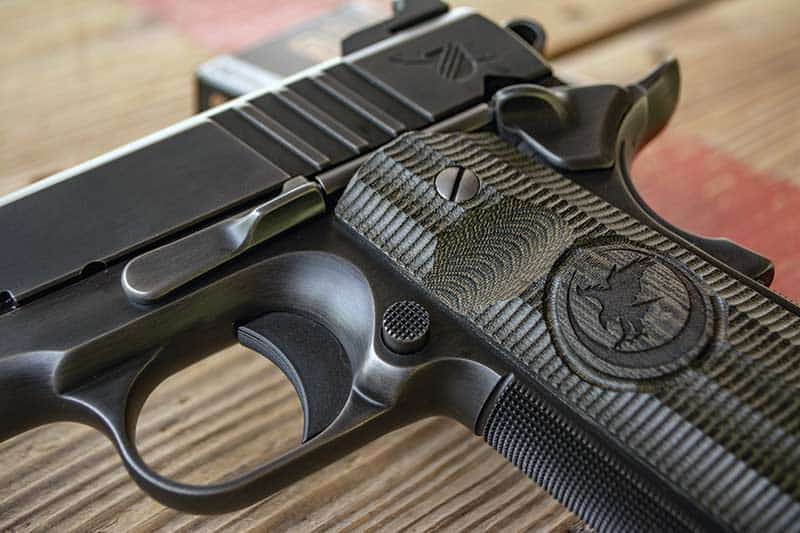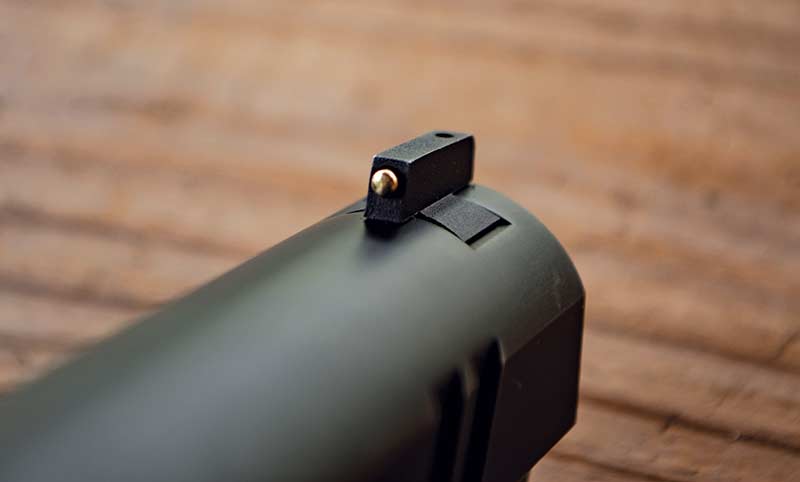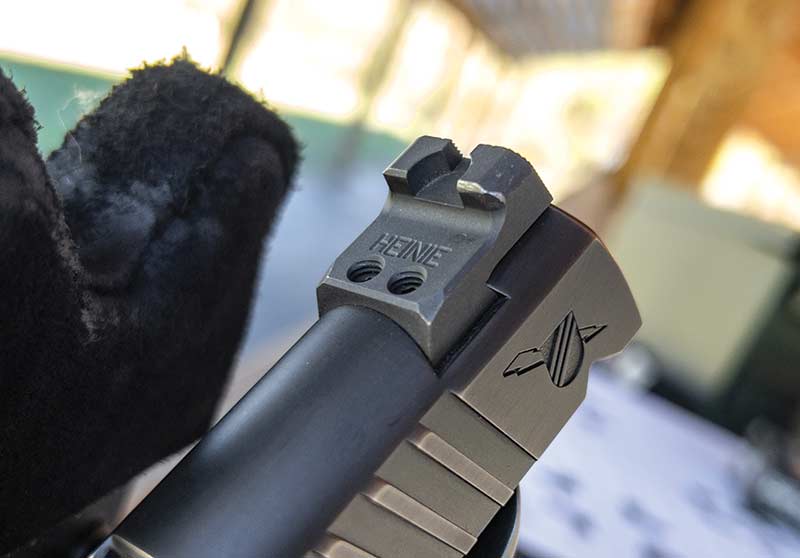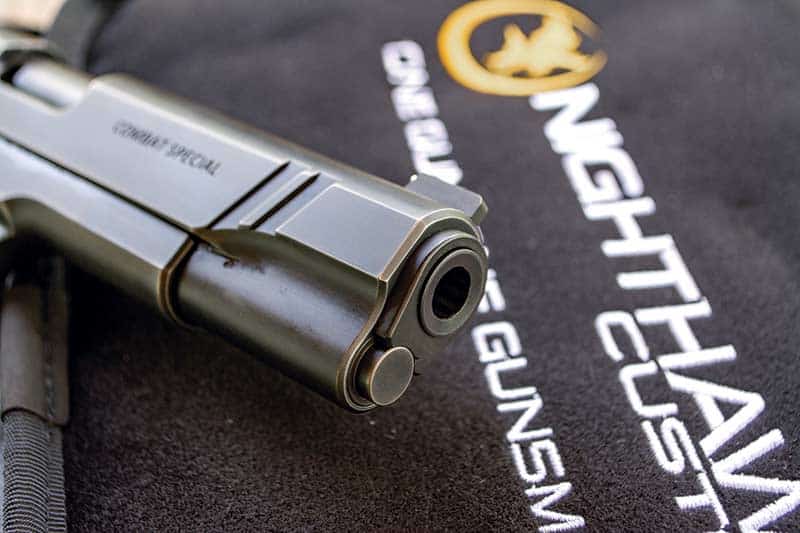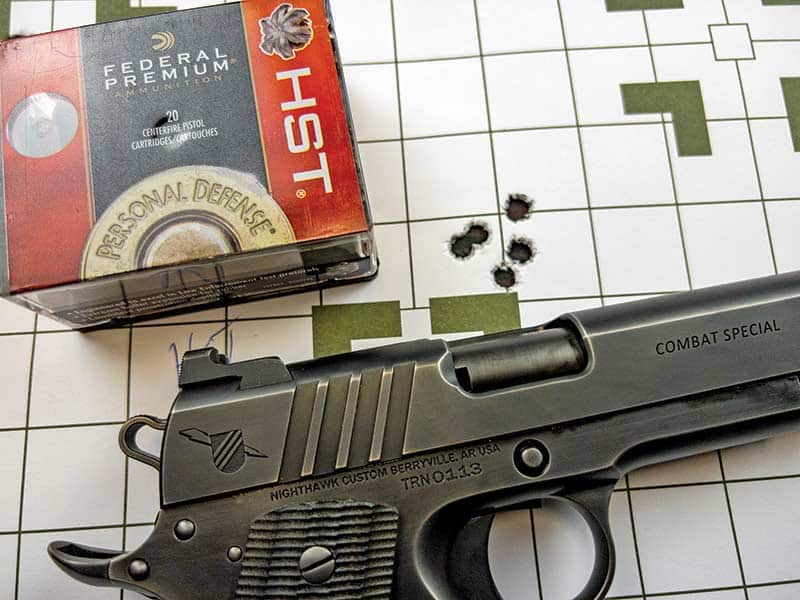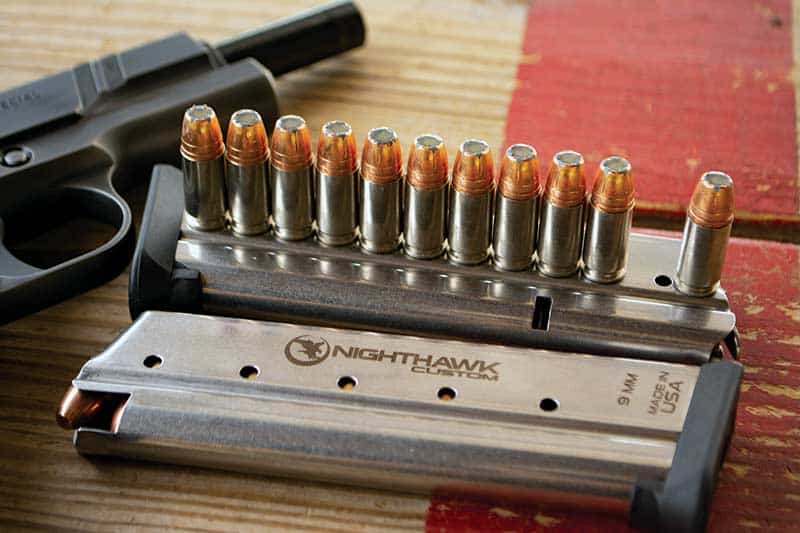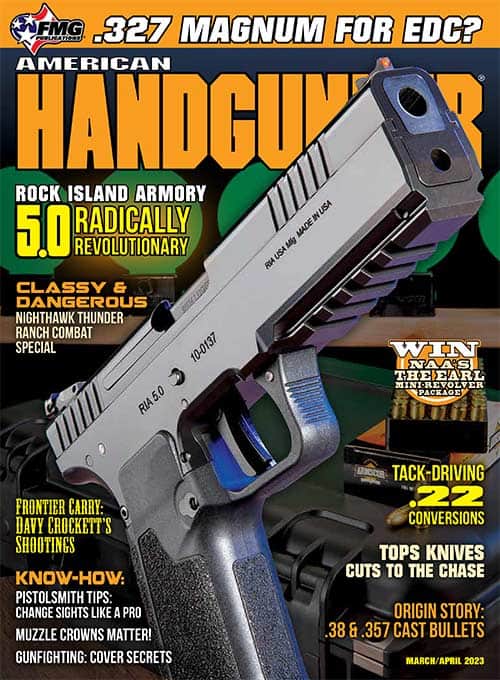Nighthawk Thunder Ranch Combat Special
Classy and Dangerous
I wouldn’t consider myself a car expert by any stretch, although I enjoy the elegance of a fine automobile. As a long-suffering tech guy, I also enjoy process-related factoids about the world’s ultimate performance vehicles.
The Bugatti Chiron (disclaimer: I don’t own one …) is electronically limited to a top speed of 261 mph, and yes, I said limited. That’s because this supercar can exceed that velocity. The problem lies with tires. Nothing in current production can handle the stresses associated with a Chiron’s full-out sprint, so engineers have to “ease off the gas,” so to speak. The performance stats are equally impressive. Zero to 60 in 2.4 seconds, continuing to 124 mph in an additional 4.1.
As you might expect, Bugattis aren’t made on a production line. Instead, parts are delivered in padded cases to an “atelier” in Molsheim, France. For those like me, who flunked la Francais in seventh grade, “atelier” means “professional artists studio.” The build process takes over six months while the car sits in a glass-walled suite. Technicians come to the car to do their work — they don’t sit and wait for partially assembled cars to pass them by. You won’t find any sort of conveyor belt in this NASA-like clean room.
One Gun, One Gunsmith
The whole point of mass production is to make something “good enough” for an affordable price. If you want a pistol that ranks among the very best, you’ll look for a gun built more like a Chiron.
The folks at Nighthawk Custom coined the phrase, “One gun, one gunsmith” to capture their manufacturing philosophy. It means what it says.
Nighthawk starts each 1911 pistol with 46 parts, machined from bar stock billet. They’re intentionally oversized to allow the gunsmith to hand-fit every one to each specific pistol. No parts bins here.
As the pistol becomes functional during the build process, that same gunsmith will test fire the gun, ensuring it meets their personal and company standards. When all is deemed up to exacting standards, it’s time for finishing. Beveling 90-degree edges, deburring and hand sanding out every machine mark complete the process.
The last step is applying a stamp under the left grip panel, which forever marks the pistol with the gunsmith’s initials. Reputation matters, so you can bet things are just right when the stamp is applied.
The process and a hefty dose of personal accountability allow the company to offer a lifetime guarantee. Not your lifetime, but that of the pistol, regardless of who owns it. This is how you create heirloom guns.
TR Combat Special
A collaborative design effort between Thunder Ranch’s Clint Smith and Nighthawk engineers, the TR model encompasses the feature set of the perfect fighting pistol. It’s available in both .45 ACP and 9mm, but as Landon Stone of Nighthawk related to me, it’s almost all 9mm now. Just a few years ago, the company was producing 70 percent .45 ACP pistols, 20 percent 9mm and 10 percent other calibers like 10mm and .38 Super. Now, with the resurgence of 9mm, those first two numbers have flipped.
The Thunder Ranch Combat Special signature features include extra-wide cocking serration grooves, two up front and four in the back, a lanyard attachment point and a mil-spec style nubbed safety lever. The safety lever is short, front to back, yet activates easily enough using the section of my thumb below the joint. Once disengaged, it remains out of the way while shooting.
Finishing Touches
The finish is stunningly smooth. Actually, that’s an understatement, like saying a detour to Alpha Centauri is a “slightly longer” road trip. You’ll see what I mean when you run your finger down any smooth surface on the slide. I might liken the sensation to dragging an ear of steaming hot corn on the cob across a stick of melting butter. I don’t know how they achieve this finish. Perhaps it’s some advanced nano-injected butter polishing, or maybe they found a source for 618,000 grit emery cloth. Whatever the technique, the outcome is nothing short of stunning. It actually feels slippery.
My first hint at the attention to detail within this pistol appeared when I picked it up from my local FFL. As a home-based dealer, he often talks guns and shares the latest gear with other customers. Without fail, everyone who picked up this sample became instantly enamored. Until they racked the slide. That was the jaw-drop moment. If you can imagine a piece of hot glass, covered with hot butter, sliding against another piece of hot glass, also covered with hot butter, you’re starting to get close to describing the feel of this action. It just glides — with no detectable shake — throughout its entire course of travel.
Sights
Part of Clint’s “fighting pistol” criteria is the sighting system. Up front is a classic gold bead — nothing fancy to break, dim, or wear out over time and hard use — just functional elegance. While a gold bead doesn’t produce its own illumination source like Tritium, it does a surprisingly good job of reflecting even lower levels of ambient light. It’s a visible solution in bright sun, shade and even indoors. If it gets dirty from range filth, no worries; give it a quick wipe, and it’s like brand new. Gold is like that and this sight is legit 14k.
The rear sight is a Heinie Black Ledge. Initially designed for special forces use, it features a sharp vertical front edge to facilitate one-handed weapon manipulation if necessary — think clearing a jam in a jam. The eyeball side is horizontally serrated to reduce glare. The rear notch is a bit wider, allowing more daylight on either side of the front sight post picture for speedier sight acquisition.
All 1911
Everything else in this pistol is classic 1911, just done to the extreme. It’s a full government-sized model, so it measures 8.6″ end-to-end and tips the scales a hair over 41 oz. The linen Micarta grip panels are a well-textured green tint. Combined with 25dpi checkering on the front strap and mainspring housing, this pistol offers plenty of grip.
As tight as this pistol is, it takes down easily with bare hands, and the guts are just as you’d expect from a classic 1911. No full-length guide rod inside, just welcome details like the recessed hole for the slide stop on the starboard side, creating a flush alignment along the frame.
Range Performance
Let’s talk about recoil. There isn’t any. Just kidding, but this is one easy shooting gun, and the recoil and muzzle flip associated with any of the 9mm full power defense loads was basically nil. Steel, plus a large pistol with superb grip ergonomics and a “slick as buttered-glass” action, all add up to one enjoyable sensation when pressing the trigger. This is one of those pistols you will gleefully shoot all day long. A thousand rounds wouldn’t cause any undue discomfort.
Speaking of the trigger, the solid face with vertical serrations travels a hair under 1/8″ of take-up before a breathtakingly crisp break. Time after time, I measured precisely 3½ lbs. of pull weight.
I shot the TR with a variety of 9mm, and, just for kicks, chronographed it all. For the ballistic geeks among you, here’s what you get from the 5″ barrel: Federal HST 124-grain, 1,184.5 fps; Federal Syntech 124-grain, 1,193.3; Norma MHP 108-grain, 1,204; Black Hills FMJ 115-grain, 1,172.3; Federal Punch 124-grain, 1,187.7; and Speer Gold Dot Carry Gun 135-grain, 1,149.7. The fun one of the bunch was Liberty Defense’s Civil Defense screamer. With its 50-grain projectile, I clocked an average of 2,063.5 fps. Smokin!
As for accuracy, I found group size limited only by my eyesight. It would be great fun to stick an optic on this pistol and shoot it at 50 or even 100 yards for accuracy, but the rail-less configuration and my lack of a grip-attached scope mount prevented that. So, iron sights at 25 using a Ransom Multi-Caliber Rest it was. Even still, the HST printed .77″ while Speer Gold Dot came in at 1.08″. The other loads ranged from 1.26″ to 1.94″. Except for violating the speed limit, the Liberty Civil Defense behaved well and printed 1.36″.
Rapport Sommaire
You get what you pay for. At $3,799, you’re investing in a special pistol, and this one doesn’t disappoint. In addition to the functional elements already discussed, the smoked Nitride finish is simply stunning.
There are production pistols that shoot small groups and have earned excellent reliability reputations. But if you’re one to appreciate the finer things in life, check out a Nighthawk. How many shops have had six (and counting) of their gunsmiths inducted into the American Pistolsmith Guild?
For more info: NighthawkCustom.com



